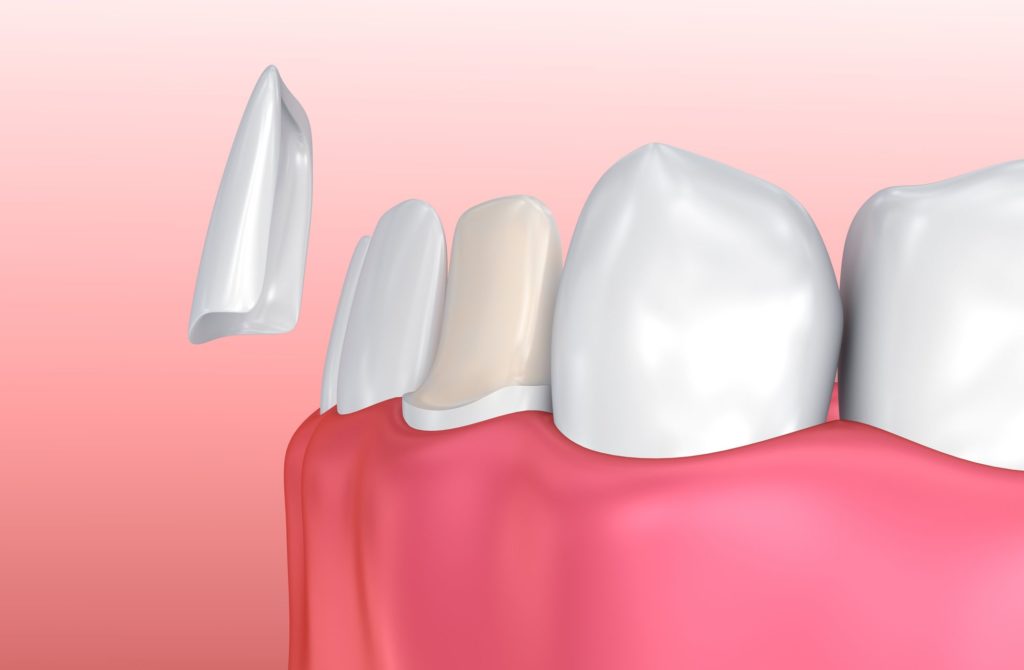Are you looking for a way to improve the structure and appearance of your teeth? When you schedule a consultation with your dentist, they can find a treatment that will work best for your unique dental needs. They can suggest fixtures that adhere to teeth and enhance them in multiple ways.
Both porcelain veneers and dental crowns cover affected teeth and offer a variety of benefits. But they are designed with different purposes in mind. Read on to learn more similarities and differences between porcelain veneers and dental crowns.


Cosmetic Enhancement with Porcelain Veneers
Porcelain veneers feature shell-like caps that adhere to the front of the teeth. They are cosmetic fixtures, meaning their purpose is to improve the appearance of your smile. Veneers can construct a whiter, straighter, and more regular smile.
Dentists build veneers on a customized basis, meaning they choose the color, shape, and size of them based on the patient’s natural teeth and their aesthetic goals. This individualized approach ensures a beautiful and natural-looking finish.
The dentist must prepare the surface of the teeth before they can attach veneers. This means they etch into the enamel, making it easier for the bonding to successfully secure the veneers over the front of the teeth.
Veneers serve a cosmetic purpose, but they can boost a patient’s oral health as well. The shells will shield weakened enamel at the front of the teeth and will also make it easier to practice your oral hygiene routine. Therefore, the treatment can lower a patient’s risk of dental problems while enhancing their smile’s look.
Restoring Damaged Teeth with Dental Crowns
Dental crowns are ceramic caps that fit over a tooth and seal into place with dental cement. They cover the entire tooth rather than just the fronts as veneers do.
Patients value the durable material which can withstand everyday dental wear and tear. Though like veneers, you should take care to avoid high levels of pressure that could damage them. Both veneers and crowns can last for fifteen or more years with proper care.
Unlike veneers, dental crowns are a restorative dental treatment. This means that dentists use them to repair and rebuild damaged teeth. However, they retain cosmetic advantages as well.
Dentists build crowns on a customized basis just like veneers, which means patients can count on a natural and gorgeous look to their smiles after the treatment. Dentists can also employ a crown to brighten a severely discolored tooth.
Before placing a crown over a tooth, a dentist must remove a small amount of enamel to make room for the cap, similar to the veneer procedure. Thus, as with porcelain veneers, dental crowns must remain in place to protect the vulnerable underlying enamel displacement.
Crowns can also treat enamel loss, like veneers, but they can also address many other dental concerns. Dentists may also use crowns to treat advanced tooth decay or tooth breakage.
